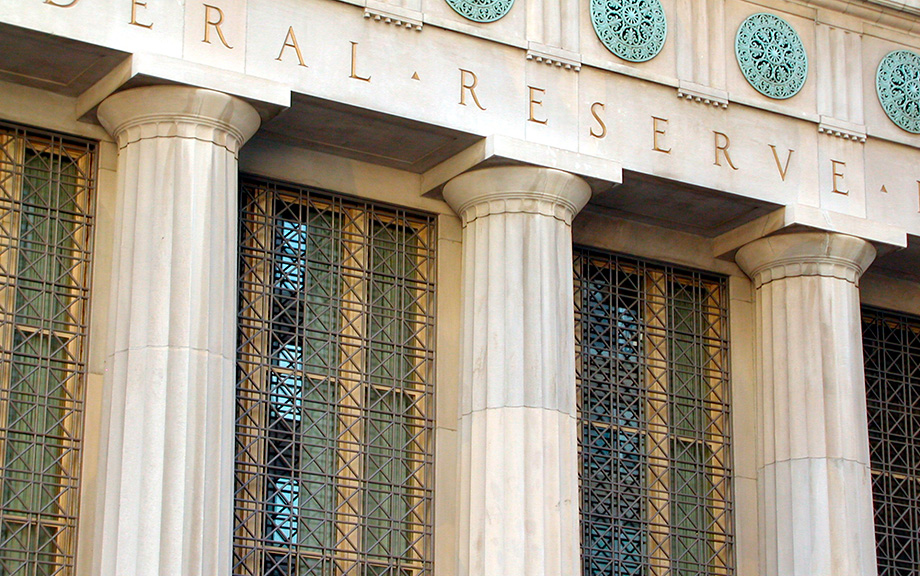Can Discount Window Stigma Be Cured?

One of the core responsibilities of central banks is to act as “lender of last resort” to the financial system. In the U.S., the Federal Reserve has been operating as a lender of last resort through its “discount window” (DW) for more than a century. Historically, however, the DW has been plagued by stigma—banks’ reluctance to use the DW, even for benign reasons, out of concerns that it could be interpreted as a sign of financial weakness. In this post, we report on new research showing that once a DW facility is stigmatized, removing that stigma is difficult.
Thinking of Pursuing a PhD in Economics? Info on Graduate School and Beyond

Becoming a PhD economist can provide a fulfilling and financially secure career path. However, getting started in the field can be daunting if you don’t know much about the preparation you’ll need and the available job opportunities. If you’re wondering what it means to be an economics researcher or how to become one, please read on. We’ll review how to prepare for a career in economics research, what an economics PhD program entails, and what types of opportunities it might bring. Economic education is a core component of the Federal Reserve Bank of New York’s mission to serve the community. To empower would-be economists, this post provides information for students who seek a career in economics research. We hope this information will be helpful to students interested in economics, regardless of their background and economic situation. This information is most applicable to students applying to programs in the United States.
Taking Stock: Dollar Assets, Gold, and Official Foreign Exchange Reserves

Global central banks and finance ministries held nearly $12 trillion of foreign exchange reserves as of the end of 2023, with nearly $7 trillion composed of U.S. dollar assets. Nevertheless, a narrative has emerged that an observed decline in the share of dollar assets in official reserve portfolios represents the leading edge of the dollar’s loss of status in the international monetary system. Some market participants have similarly linked the apparent increase in official demand for gold in recent years to a desire to diversify away from the U.S. dollar. Drawing on recent research and analytics, this post questions these narratives, arguing that these observed aggregate trends largely reflect the behavior of a small number of countries and do not represent a widespread effort by central banks to diversify away from dollars.
Do Exchange‑Traded Products Improve Bitcoin Trading?

Spot bitcoin exchange-traded products (ETPs) began trading in the U.S. on January 11, 2024. For investors, these ETPs purport improved liquidity and price efficiency, and more convenient access to bitcoin trading compared to other means of trading bitcoin in spot markets. Proponents also cite bitcoin holdings as a portfolio diversification opportunity due to historically low correlation with traditional financial securities. Others argue that bitcoin remains a speculative asset and that ETPs increase its interconnections with the traditional financial system. In this post, we examine the initial performance, trading costs, and price efficiency of spot bitcoin ETPs in the U.S.
The Changing Landscape of Corporate Credit

Firms’ access to credit is a crucial determinant of their investment, employment, and overall growth decisions. While we usually think of their ability to borrow as determined by aggregate credit conditions, in reality firms have a number of markets where they can borrow, and conditions can vary across those markets. In this post, we investigate how the composition of debt instruments on U.S. firms’ balance sheets has evolved over the last twenty years.
Supply Chain Disruptions Have Eased, But Remain a Concern

Supply chain disruptions became a major headache for businesses in the aftermath of the pandemic. Indeed, in October 2021, nearly all firms in our regional business surveys reported at least some difficulty obtaining the supplies they needed. These supply chain disruptions were a key contributor to the surge in inflation that occurred as the economy recovered from the pandemic recession. In this post, we present new measures of supply availability from our Business Leaders Survey and Empire State Manufacturing Survey that closely track the New York Fed’s Global Supply Chain Pressure Index (GSCPI). We will begin publishing these data on a monthly basis starting in June. These indexes indicate that supply availability had generally been improving since early 2023, but over the past couple of months, improvement has stalled. This trend is concerning since our May Supplemental Survey indicates that between a third and a half of businesses in the region are experiencing difficulties obtaining supplies, and many are reducing operations and raising prices to compensate, though to a lesser extent than a few years ago.
Is the Recent Inflationary Spike a Global Phenomenon?

In the aftermath of the COVID-19 pandemic, inflation rose almost simultaneously in most economies around the world. After peaking in mid-2022, inflation then went into decline—a fall that was just as universal as the initial rise. In this post, we explore the interrelation of inflation dynamics across OECD countries by constructing a measure of the persistence of global inflation. We then study the extent to which the persistence of global inflation reflects broad-based swings, as opposed to idiosyncratic country-level movements. Our main finding is that the spike and subsequent moderation in global inflation in the post-pandemic period were driven by persistent movements. When we look at measures of inflation that include food and energy prices, most of the persistence appears to be broad-based, suggesting that international oil and commodity prices played an important role in global inflation dynamics. Excluding food and energy prices in the analysis still shows a broad-based persistence, although with a substantial increase in the role of country-specific factors.
Do Unexpected Inflationary Shocks Raise Workers’ Wages?

The past year’s steady decline in nominal wage growth now appears in danger of stalling. Given ongoing uncertainty in Ukraine and the Middle East, this seems an opportune moment to revisit the conventional wisdom about the relationship between inflation and wages: if an unexpected increase in energy costs drives up the cost of living, will workers demand higher wages, reversing the recent moderation in wage growth? In new work with Justin Bloesch and Seung Joo Lee examining those concerns, our analysis shows that the pass-through of such inflationary shocks to wages is weak.
Delinquency Is Increasingly in the Cards for Maxed‑Out Borrowers

This morning, the New York Fed’s Center for Microeconomic Data released the Quarterly Report on Household Debt and Credit for the first quarter of 2024. Household debt balances grew by $184 billion over the previous quarter, slightly less than the moderate growth seen in the fourth quarter of 2023. Housing debt balances grew by $206 billion. Auto loans saw a $9 billion increase, continuing their steady growth since the second quarter of 2020, while balances on other non-housing debts fell. Credit card balances fell by $14 billion, which is typical for the first quarter. However, an increasing number of borrowers are behind on credit card payments. In this post, we explore the relationship between credit card delinquency and changes in credit card “utilization rates.”















 RSS Feed
RSS Feed Follow Liberty Street Economics
Follow Liberty Street Economics